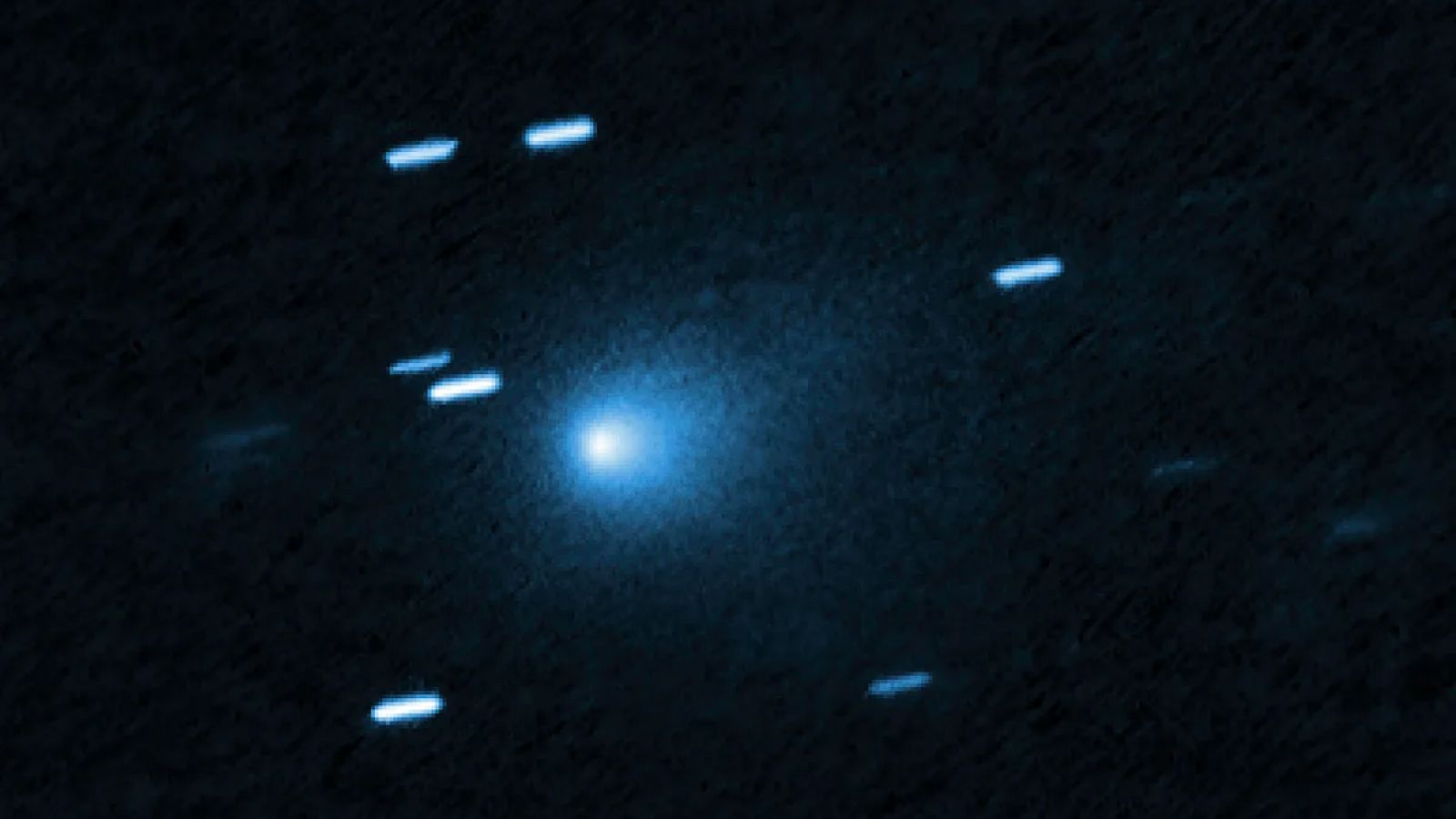🔭 3I/ATLAS: the interstellar visitor had already been recorded in the past
Follow us on Google News (click on ☆)

Hubble image showing 3I/ATLAS in July 2025.
Credit: NASA/ESA
To extract the faint signal of 3I/ATLAS, researchers used a method called 'shift-stacking'. They aligned and superimposed multiple images taken at regular intervals, thus revealing the presence of the rapidly moving object. This technique amplifies the brightness of celestial bodies that are too faint to be visible in a single photograph.
Between May and June, the brightness of 3I/ATLAS increased by a factor of five, far beyond what could be explained by its increasing proximity to the Sun. Scientists attribute this activity to the sublimation of hypervolatile materials, such as carbon dioxide. These gaseous compounds evaporate at lower temperatures than water ice, creating a bright coma around the cometary nucleus.
Unlike comets in the Solar System, which have often lost their volatiles, 3I/ATLAS shows a different composition, originating from different environments in the galaxy. TESS observations did not allow determination of the nucleus rotation period, which was masked by the coma.
What is an interstellar object?
An interstellar object is a celestial body, such as a comet or asteroid, that does not orbit a star but travels freely between stellar systems. These bodies come from other regions of the galaxy and occasionally pass through our Solar System. Their study provides clues about the formation and evolution of planets in environments outside the Solar System. Unlike Sun-bound objects, they can have very different compositions and histories.
The detection of these objects is recent, with only a few confirmed examples to date. Each discovery allows scientists to test theories about the dynamics and chemistry of planetary systems. Future space missions could include rendezvous with such objects for direct analysis, opening new perspectives in astronomy.
How does the shift-stacking method work?
Shift-stacking is an astronomical imaging technique used to detect faint or fast-moving objects. It involves taking a series of images and digitally shifting them to align the position of the target object in each frame. By superimposing these aligned images, the signal from the object is enhanced, while background noise is reduced. This reveals details that would be invisible in a single exposure, such as the shape or brightness of a distant comet.
This method is particularly useful for telescopes that capture high-frequency images, like TESS with its shots every 200 seconds. It requires precise calculations to predict the object's trajectory. Shift-stacking has however been successfully applied to various discoveries, from asteroids to transient phenomena, demonstrating its importance in the analysis of modern astronomical data.